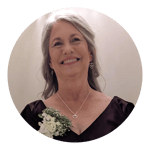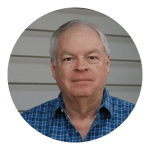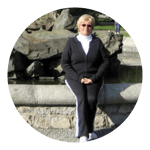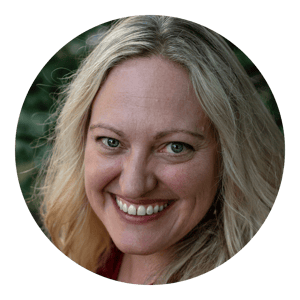If you're ready to push past your DNA brick walls, you need to learn
How to Identify Your Mystery DNA Matches
with Strategies the Experts Use
A skill set every genetic genealogist needs...
Start turning those unknown matches into tree connections!
On-demand access: start learning as soon as you'd like!
You'll learn to identify unknown relatives
(your mystery DNA matches) with:
- Insights into hidden clues from your DNA testing website: your mystery matches may be revealing more than you realize about who they are!
- More meaningful, respectful ways to contact your matches-even in sensitive situations-and increase their response rate
- Understanding of how shared matches of matches tools at your testing company may help you identify mystery matches
- Focused strategies for finding your mystery matches using Google and social media, so you can more confidently pick them out of an online crowd
- Tips to use people-finding websites-we recommend our favorites and walk you through how to get the most out of them for free (i.e., not get sucked into their sales tactics)
- Clever ideas on how to mine digitized newspaper websites, because your matches (or the relatives on their trees) may be mentioned in news articles that tell you who they are
- Resources for finding living (and recently-living) people on your favorite genealogy websites, because they may appear there as users or in public databases
What you get in the Finding Living Relatives Course
- Proven strategies to help identify those unknown relatives you find when you take a DNA test (your DNA matches), because their identities can help you learn about your shared roots
- Virtual instruction from top experts in DNA, forensics and genealogy
- Step-by-step video instructions with helpful examples, do you can see how each concept works in real situations
- Hands-on practice and expert-monitored online discussions, so you'll learn more confidently
- Inspiring case studies, including a mini-case study simulation, to show you how powerfully these techniques help you identify birth relatives and unknown ancestors
- A downloadable digital workbook with summaries of what you've learned; helpful worksheets and templates; and additional resources so you can keep learning and DOING the DNA!
- 6 months of access to the Course resources, so you can come back and review
Caveat: Some of the techniques taught will be most effective in the United States. Limited resources specific to researching living people in the U.K., Canada, and Australia will also be provided.
How much does it cost?
Real results from the Finding Living Relatives Course

Kris L.
"All that you covered in the seminar helped me to figure out who [two of my mystery matches] actually ARE, to find them online, etc. and to get further in the hunt with respect to them. Because of the difficulty in finding info for their family trees on my own, I have chosen to message both, hopefully to get more info from them. And your coaching about wording to do so was VERY HELPFUL!!"

Joe H.
"[After taking this Course] I was able to connect 4 mystery matches primarily using Facebook. This involved one father with multiple partners, each with children, one child carrying her mother’s maiden name. Luckily, they all appear in each other’s Family and Relationships. This helped me overcome unrecognized names in a family branch that has multiple relationships and the DNA quantity confusion that it brings."

Veronica Reilly
"Found the location [of a mystery match and]...maiden name....WOW her line connects to my husband's paternal line! More research to be done but some of the pieces fit and now I have a direction."
Who are we?
We teach people how to use DNA testing to learn about their families. We believe that discovering your family story is so empowering! It makes you stronger, more rooted, more connected, more confident. You can do it–and we can help you, just as we’ve helped thousands of people around the world for 10 years.

Diahan Southard
Founder and CEO of Your DNA Guide and a world-renowned genetic genealogy educator

Lori Napolitano
Genetic genealogy coach and retired Chief of Forensic Services, Florida Department of Law Enforcement

Sunny Jane Morton
Renowned genealogy educator, Content Director at Your DNA Guide
Frequently asked questions
Who should take this Course?
Everyone who is trying to identify their DNA matches
Anyone who is frustrated by DNA matches who don’t respond when contacted or who don’t share family trees
Anyone who wants to connect with birth relatives or extend their family trees
Genealogists and search angels who want to improve their skills and effectiveness
These are skills not typically taught to traditional genealogists, but if you are (or aspire to be) a genetic genealogist, you need these skills.
Why take this Course, especially if I already use Google, Facebook, etc.?
The longer you go without knowing who your important DNA matches are, the more time, energy and frustration you waste on your genetic genealogy journey. You could be communicating with them more effectively (if you choose to). You could be finding more meaningful clues about who they are and how they’re related to you.
If you’re already a regular user of Google, Facebook, and newspaper websites, that’s great! You’ll love it even more when we show you how to harness these powerful information technologies in very specific ways. There’s always more to learn about using these tools. Like how to find someone’s DNA test username elsewhere online. How to build someone’s family tree using their social media account and mentions of them in their relatives’ obituaries. How to use lesser-known resources to tell you more about living (or recently-living) people and their associates. The examples we’re going to show you are pretty mind-blowing! These novel, clever strategies–taken together–can save you HOURS of time and frustration. They can lead you more quickly, more efficiently and more accurately to the DNA answers you’re looking for.
Looking for living people feels weird. How do you do it ethically?
Great question. For those who like to respect privacy and/or who typically confine their record searches to deceased relatives, this can feel weird. In our Finding Living Relatives Workshop, we teach you to mine public data. Internet searches are like a modern extension of a public library: they lead to information that is openly available. Social media profiles are available to anyone who cares to look, according to the user’s privacy settings. People-finding websites mine public, residential, business and other similar records.
Let’s also consider intention and focus. If you share a significant amount of DNA with someone, you’re related. We help you to focus on answering the question of HOW you’re related, which is a truth we believe you both have a right to explore.
Why do I need to find living people if I'm trying to identify deceased ancestors?
The only way to find your ancestors through DNA results is to work with your DNA matches. And your DNA matches are (mostly) living people! The focus of the Course is to help you identify those hard-to-find mystery DNA matches, but these skills can also equally strengthen your ability to do descendancy research, or to take your known deceased ancestors down to their children, grandchildren, great grandchildren, who are your living DNA matches!
What technical requirements are necessary?
The Finding Living Relatives Course takes place entirely online in our Circle community. After you enroll, we will send you an email with an invitation to join us there. You’ll need a reliable internet connection for watching the video instruction sessions and accessing the other Course materials. You’ll need access to DNA test results, which do not come with this Course.
What is the refund policy?
We do not offer refunds for our on-demand courses. Because the Finding Living Relatives Course is entirely on-demand, without a live (timely) component, scheduling conflicts do not apply as a reason for returns. The course descriptions are very clear about who the course is for (what level of education is prerequisite); please read them and consider carefully your readiness before purchasing. If you find that you’re not quite ready after starting the course, we encourage you to keep learning and then come back to it.
More praise for the Finding Living Relatives Course

Terry K.
"I really enjoyed the workshop. It was a great refresher course for search methods, and I learned lots of more in-depth skills when searching Google and social media."

Kris L.
"The course was just super in teaching in an organized fashion how to draw together all the disparate methods we all utilize to find living people online in our genealogical research. I learned so many helpful tips, and was reminded of many others, and was simply inspired to tackle this search in a more ORGANIZED fashion and TO STAY FOCUSED!!....

John Harrison
The Finding Living Relatives genetic genealogy course was both enlightening and affirming. It provided a powerful demonstration of real-world techniques used to identify and connect living relatives, even under the most challenging circumstances.
The featured case study began with virtually no promising leads—truly a worst-case starting position. Yet, it perfectly illustrated how persistence, methodical research, and creative workarounds can lead to meaningful breakthroughs. What stood out was the case’s realism: not every strategy succeeded right away, and some failed entirely. That honesty made the eventual success even more instructive.
One of the most valuable lessons came from the example of filing a formal request with the state for the adoptee’s biological parent information. Even though the request took a full year to yield results—and only after the biological mother had passed away—it reinforced a crucial takeaway: if she had never filed, that door might have remained closed forever. The message was clear—do everything right even if it seems fruitless at the time.
This course beautifully reinforced the need for professional patience, persistence, and adaptability. It emphasized that the “magic” often happens not from luck, but from doing the tedious, procedural things right—even when the outcomes are delayed or uncertain.
The case concluded with a deeply moving finale: the adoptee found her biological family, connected with siblings, and was, at last, placed on the branches of her rightful family tree. A fitting and emotional close to a stellar example of applied investigative techniques. Well done! A course worth recommending—and remembering.

